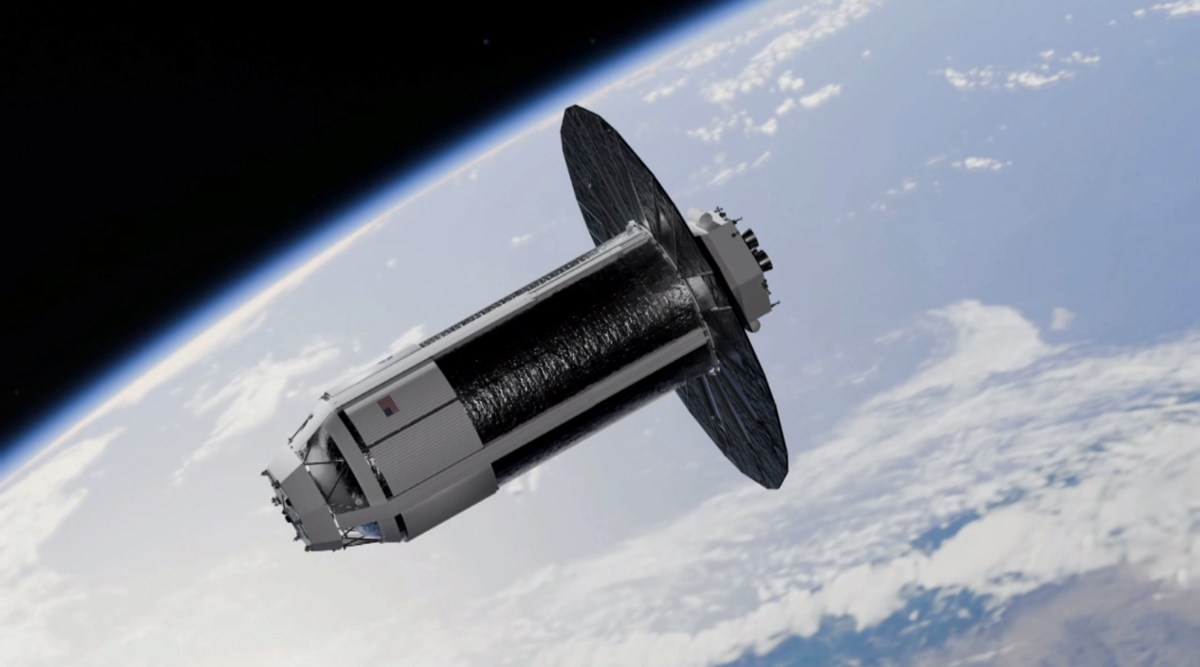WASHINGTON — Blue Origin revealed new details about its development of an Artemis lunar lander as the company nears the first launch of a smaller lander.Speaking at the spring meeting of the Lunar Surface Innovation Consortium May 19, John Couluris, senior vice president of lunar permanence at Blue Origin, showed off a new illustration of a “transporter” vehicle that will support its Blue Moon Mark 2 lander.The transporter is part of the architecture that Blue Origin has said little about since winning a $3.4 billion award from NASA two years ago to build Blue Moon Mark 2 for the Human Landing System (HLS) program, although the company provided few details about it at the time. Originally, the transporter was going to be developed by other companies that were part of the Blue Origin-led “National Team,” but industry sources said that Blue Origin has since taken over development of the transporter.“This vehicle has evolved significantly since we first won,” he said of the transporter. The purpose of the vehicle remains to aggregate liquid hydrogen and liquid oxygen propellant in Earth orbit and then transport it to a near-rectilinear halo orbit around the moon, where it will transfer the propellants to the Blue Moon lander there to enable it to perform a lunar landing.The transporter will be launched into low Earth orbit on a New Glenn rocket and then fueled using excess propellant from New Glenn upper stages, although he did not disclose how many refuelings will be needed. It will use tanks seven meters in diameter, same as the upper stage. “Instead of doing bespoke tanks for individual vehicles, it’s using the same assembly line,” he said.A key enabler for the system is “zero-boiloff” technology to prevent losses of cryogenic propellants. “You always hear, ‘wow, that’s hard to do,’ and it is hard to do,” he said, but noted the company is making progress on that zero-boiloff technology that maintains liquid hydrogen at 20 kelvins — 20 degrees Celsius above absolute zero — and liquid oxygen at 90 kelvins.Working with NASA, Blue Origin has integrated its first prototype and put it in a thermal vacuum chamber. “By June, we will be showing that we are consistently holding hydrogen and oxygen as storable propellants,” he said. “By December, we’ll start our flight units.”Couluris argued that being able to store liquid hydrogen and liquid oxygen for extended periods would be a breakthrough. That propellant combination has the highest performance of major chemical propulsion systems and can be obtained from water on the moon or other celestial bodies.A fully fueled transporter can carry about 100 metric tons from Earth orbit to lunar orbit, he said, with applications beyond the moon as well. “This vehicle with minimal changes, mainly on comms, can bring up to 30 metric tons to Martian orbit,” he said. “It can open up the asteroid belt. This opens up the solar system.”He didn’t offer schedules for testing the transporter or the Blue Moon Mark 2 lander. During a separate panel at the conference May 20, Jacki Cortese, Senior Director of Civil Space, senior director of civil space at Blue Origin, said the company expected to conduct both an uncrewed test landing of Blue Moon Mark 2 as well as a crewed landing before the end of the decade.Blue Origin’s Blue Moon Mark 1 robotic lunar lander will fly to the moon by the end of 2025.Preparing Blue Moon Mark 1Blue Origin is also working on the Blue Moon Mark 1, a robotic lander capable of placing up to three metric tons on the lunar surface. It uses some of the same technologies, such as the BE-7 engine, as the larger Mark 2 lander.Couluris confirmed at the conference that Blue Origin would fly the Blue Moon Mark 1 lander for the first time this year. The company received a task order through NASA’s Commercial Lunar Payload Services (CLPS) program last year to fly a camera payload on that mission.“This will land this year on the south pole of the moon,” he said of the Mark 1 lander. That lander is currently being assembled in a facility in Florida. “The vehicle is getting ready to ship out of our factory in about six weeks,” he said. “We should be launching a few months after that.”Cortese said the lander will first go to NASA’s Johnson Space Center for tests in a large thermal vacuum chamber there. It will then return to Florida for launch on a New Glenn, making a seven-day transit to the moon before landing.Blue Origin is building a second Blue Moon Mark 1 lander, about six to eight months behind the first. “We’re building intentionally now to get hardware-rich,” Couluris said. If the first mission is not successful “we’ll learn from it, we’ll learn from the objectives we succeeded in and the ones we didn’t succeed in, and we’ll incorporate those into the next vehicle.”Cortese said the work on Blue Moon is in a dedicated facility. “We intend for it to be a production line capability,” she said, but did not disclose the projected production rate for the lander. “It was really important for us to procure all hardware for two Mark 1 missions years ago,” she added, citing supply chain challenges.“Ideally, we’ll have a successful first mission of Mark 1, incorporate any findings and be able to fly again,” she said. If it is not successful, “we have another lander ready to go. That was something that was really important for us.”
By Tyler Mitchell
Tyler is a renowned journalist with years of experience covering a wide range of topics including politics, entertainment, and technology. His insightful analysis and compelling storytelling have made him a trusted source for breaking news and expert commentary.
